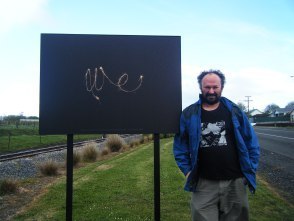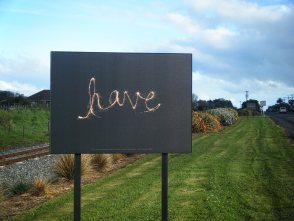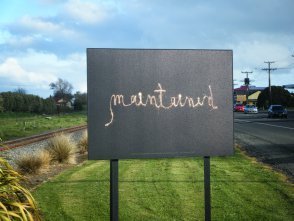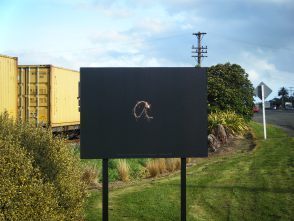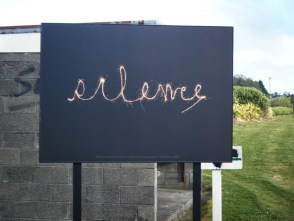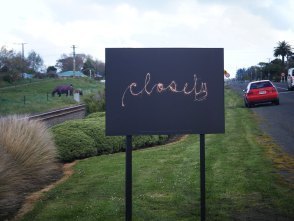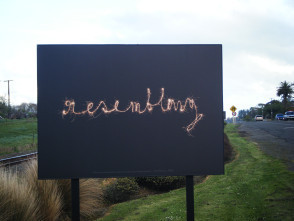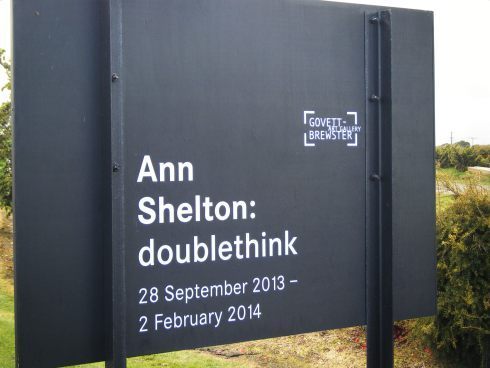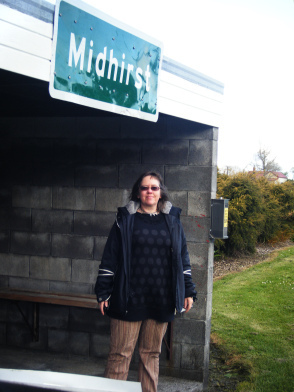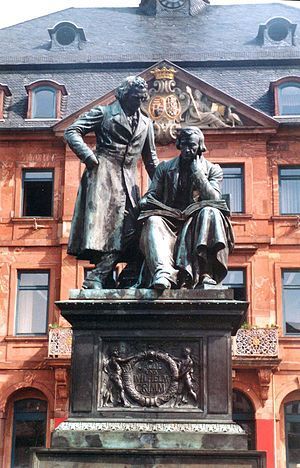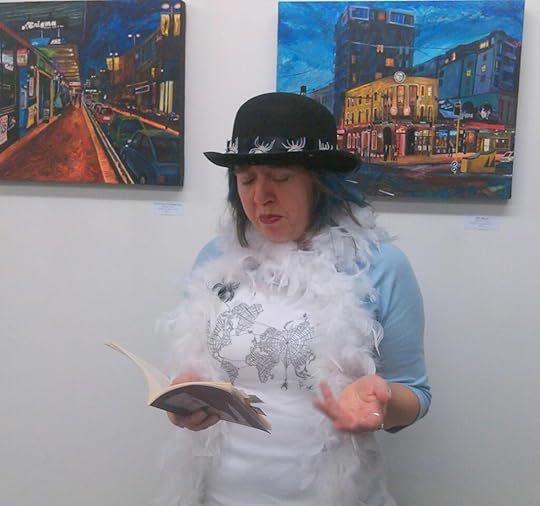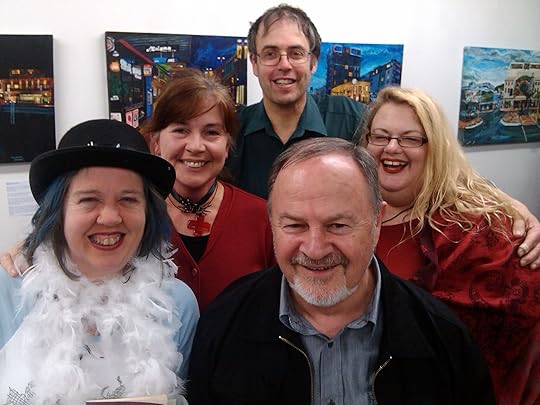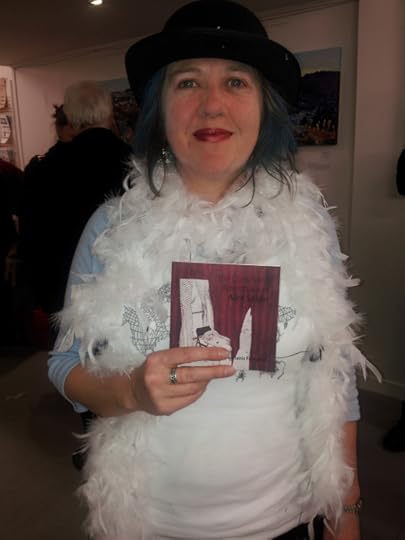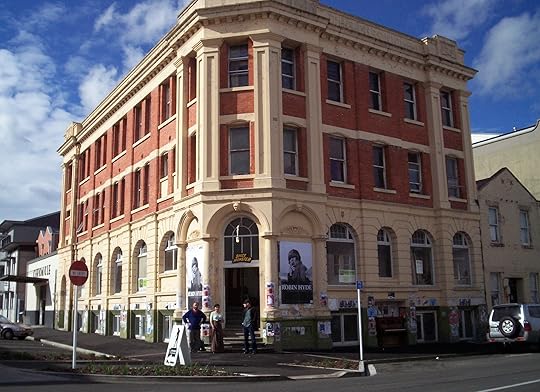Janis Freegard's Blog, page 17
November 18, 2013
Remembering Neil Roberts
Thirty-one years ago today, Neil Roberts blew himself up outside the Wanganui Computer Centre. He left graffiti nearby that said: ‘We have maintained a silence closely resembling stupidity’ – a quote from the revolutionary Junta Tuitiva of La Paz, which fought against the Spanish for the freedom of Bolivia in 1809. Neil was a friend of mine and this is something I wrote after he died.
Poet Airini Beautrais has also been writing about her responses to Neil’s actions recently. Part of her long poem can be read on the Tuesday poem site and in the latest JAAM.
And still more on Neil – artist Ann Shelton has an outdoor art exhibition in Taranaki at the moment, “doublethink”, where she has recreated Neil’s graffiti using sparklers. You can see her photographs as a series of billboards in Midhirst, on the way between Stratford, where Neil was living, and Whanganui. Peter and I went to see it a few weeks ago. The pictures Peter took are below but you should also check out Ann Shelton’s website for the real deal.
More about Neil & the Wanganui Computer Centre:
William Keddell’s short movie ‘The Maintenance of Silence’


November 12, 2013
Editing the Tuesday Poem
This week, I’m the editor of the Tuesday Poem and have chosen a great love poem by the very talented (and glamorous) poet and editor Helen Rickerby. You can read it on the main Tuesday poem site.
Also, my writer’s file has just been added to the Book Council site. I feel real!


October 14, 2013
Tuesday Poem – The Model
This is a poem I wrote in order to illustrate what a story and poem collaboration might look like, for the Northwrite 2013 collaboration competition (closing 15 November 2013). The poem was written in response to a piece of flash fiction by Katharine Derrick, called Inside Out, that was first published in Flash Frontier.
Katharine’s story and more on the process and the competition can be found here: NorthWrite 2013 Example of a story and poem collaboration.
The Model by Janis Freegard
waiting for his arrival
I shake out my hair, undress
crows call
I am nowhere
I watch him
through the open window
striding to my door
easel-laden, eager
you come to me, I’d said
I don’t know
what he thinks he saw
he stretches his canvas
sets his paints
on my bedside table
I have nothing to say
he doesn’t see me
the image he renders
is chimeric
I am above all this
gone with the crows
rising skywards
out towards open sea
hoping I can save someone
from drowning


September 26, 2013
Grimm Tales
Monument to brothers Grimm on the market place in Hanau. (Hessen, Germany) (Photo credit: Wikipedia)
Last year, the Goethe-Institut New Zealand (in association with the New Zealand Listener and the International Institute of Modern Letters) ran a short story competition to celebrate the 200th anniversary of the Brothers Grimm’s book of fairy tales. Competition entrants were invited to write a modern-day Grimm fairytale with a New Zealand flavour, beginning with the words “Once upon a time . . .”
There were over 300 entries which the Goethe Institut has been publishing on a blog – one story per day. They are keen for feedback to help them identify the 12 most popular fairytales that will be included a print publication at the end of the year. With this in mind, they have introduced a 5 star system to enable readers to rank the stories.
The blog is here and the story I entered (The Kind Fisherwoman and the King of the Fish) is here. It was a fun idea for a competition and I’ve really been enjoying the many and varied stories. I heartily recommend having a browse – and don’t forget to have your say!


September 16, 2013
Interview with Maria McMillan
This week, I interview Maria McMillan, whose poetry collection The Rope Walk was recently published by Wellington publisher Seraph Press.
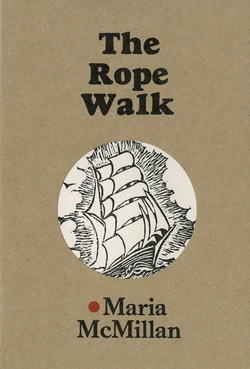
Congratulations on your first book, and such a fine book. How did you get started on this project? What sparked it off?
I had to write two poems for a writing workshop, and without meaning to, produced two linked persona poems. One from the perspective of a 19th century man experiencing his last days in his home country of Scotland before emigrating to New Zealand. And one from the perspective of his wife on the death of their young son on the ship coming over. I found making stuff up in these poems liberating. It let me write a sort of truth that I couldn’t reach when I was strictly observant of or trying to record real experiences. I made a leap then from documentary poet to maybe a drama poet. There was something new for me as well in using a voice from a different century. I became fascinated with the notion of a stoic people, like the Scots are perceived to be, experiencing huge emotional and physical moments. If your culture is taciturn and unfussy how do you talk about leaving the place your ancestors are buried knowing you won’t ever come back, or about losing a child? How do you make small words carry big moments?
So I had these two linked poems, and they got a good reception in class and from my teacher so I started writing more from different generations of the same family. I think the poems are ambiguous and can be read in different ways but for me I know who is the narrator of each poem and how they are related to the other narrators. I know the back story. I thought a lot about loss when I was writing them, and I wrote them among writing other poems over nine years, so way after that course had finished. I thought about the loss of a homeland when you leave it, the loss of men not coming back from war, and men losing their jobs and sometimes their sanity and their sobriety in the 1980s, and waves of young people killing themselves. I also think about the loss - I’m not sure what it’s a loss of – when you grow up female and all the exhilaration of becoming a woman, and how that’s tempered by a sudden realisation that there’s some danger in being female, and you and your friends are in a vulnerable position. What do you do with all that? How do people cope with all these different sorts of grief?
You’ve chosen to write about a fictional family. Why not a real one? Will we hear more about Megan, Margaret & the others?
In that first poem, I actually spent hours trying to find this photocopied transcript of this amazing diary of my ancestor who left Scotland for New Zealand, a first hand account of farmers forced off their traditional land, an account of his last days before getting on the ship, then the journey itself and arriving here. It was riveting stuff. I couldn’t find the diary and the poem was due so I started doing it from memory and then I just made stuff up. It was great for me, because I always had a nagging concern about whether that ancestor’s story was really mine to tell. Did I need permission to tell it? Who from? Also, when I got rid of the idea that I had to be accurate I could say what I wanted. I could have the characters move and speak and think the way I wanted them to. I had perfect knowledge of them because they were mine. It was much easier than having to research minutiae to figure out motivations, or possible scenarios.
As to reappearance of the characters – no, I think I’m done with them. It could have kept going, but I needed to stop and do something else.
The book is beautiful as an object as well as having beautiful contents. How did the cover image come about? Why did you choose a ship?
I had always imagined that the cover would just have text on it. I love really good typographical design. My partner, Joe Buchanan, is a typographer and he’d agreed to do the cover, but he decided it really needed an image to work. Apparently the letters in my name didn’t look right. I said okay, but it has to be a 19th century circus trapeze artist mid-leap, or a ship. Joe’s quite ocean-focused and went with the ship. He drew an image based on the ‘Adamant’, the name of one of my poems, as well as a real immigrant three-masted barque. Then he did a linocut of it. He printed it all, including using a die-cut for the circle, on his 5″ x 8″ Adana platen press.
I was really lucky to have so much input into the cover but it was Helen Rickerby, who runs Seraph Press, which published the book, and Joe who made really good final decisions about how it could all work and look as beautiful as it does.
How do you make time for writing? Is there a particular time of day you prefer? A place you like to go to?
I work four days a week, sometimes five. Joe and I have two small children. Usually it’s night that I write because that’s the only child-free time I have but sometimes I shut the door of the bedroom in the weekend. I’m not a cafe writer. I need to be alone, and there needs to be no music or talking. I think it’s because poetry is so much about the sounds of the words. Even when it’s for paper and not performance, it’s all about the sounds. I usually write a first draft in one sitting, and I do a lot of reading out what I’ve just written. I think my writing ear needs quiet. Those non-disturbed moments are rare, and it’s frustrating when nothing comes of it. Often the case.
You belong to a writing group. How does that affect your poetry?
My writing group is fabulous. We’re all poets. We used to meet in person, but now we do group video chats which has meant we meet more frequently and it’s sort of a routine low key thing we can do in our dressing gowns if we want. Having a dedicated audience willing to talk about your stuff in detail is a luxury. Our rule is the poet reads their poem and then shuts up while everyone talks about it. We’re quite strict about that and are very stern when the poet tries to interject and explain something in their poem. I learn a lot every time, whether it’s my poem or someone else’s being discussed. They’re all smart, and great readers and writers. It’s like two hours of full immersion, so you’re bound to end up a bit more fluent in understanding what does and doesn’t work in poetry.
It’s been good as well, in that when I’ve run out of steam submitting to despondent journals, I’ve been pretty relaxed about it, because my measure of success has been whether my writing group likes something or not rather than if it’s been accepted somewhere.
The other good thing (I’m quite fond of this group as you can tell) is that I see my friends and peers write astonishing poetry. It’s not some big anonymous overseas genius, it’s my mate producing a small miracle of words. There’s a sort of awe in there but also it makes it achievable. And, as well as celebrating with them, when they produce a winner, a sort of fierce determination in wanting to match them is born. Like that is it? Right then. So it’s motivating because you don’t want to be left behind.
You have another book forthcoming from VUP. Can you say a bit more about that?
Tree Space will come out in 2014. It’s a different beast to The Rope Walk. There is a bit of sea in there though, and some boats and toxic algae and stuff. But there’s also hitchhiking and protest marches, and road trips to Waitara and climbing mountains. There’s a Polish cabin attendant too. A lot of moving from one place to another. Lots of science. As well as being a typographer, Joe studies the evolution of species. When he told me that he was hanging out in this thing called Tree Space, essentially a virtual endless mathematical terrain which represents all possible ways in which species might relate to one another, I had to write a poem about it. Phylogeneticists use algorithms in tree space to figure out how species probably evolved. They have all this language around Most Likely Trees and Branch Swapping, bushy and stark trees. It seems wonderful that figuring out the very basis of life happens like this now.
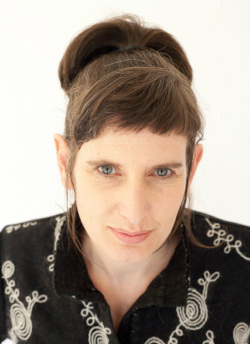
Maria McMillan has been writing poetry for many years, and The Rope Walk is her much-anticipated first collection. Maria has studied politics, trained as a librarian and has a long history as an activist. Originally from Christchurch, she now lives in Wellington with her partner and daughters. She blogs at http://mariamcmillan.weebly.com.


September 10, 2013
More launch photos!
3 photos by Alison Jones
(The top I was wearing has the “worldwide web ” printed on it – a map of the world made of spider webs, with a spider hanging off. & those things around my hat are little white plastic spiders.)
2nd pic is the Tuesday poets who were present: Mary McCallum, Tim Jones & Helen Rickerby at the back, me and Keith Westwater at the front
and some photos by Matchbox:
[image error]
[image error]
[image error]
[image error]
[image error]
[image error]
[image error]
[image error]
[image error]


September 8, 2013
Launch Photos
Here are some of Peter’s photos from the Alice Spider launch on 6 September. More launch photos to come!
[image error]
[image error]
[image error]
[image error]
and here’s one Mary Macpherson took.


August 26, 2013
Alice Spider Book Launch
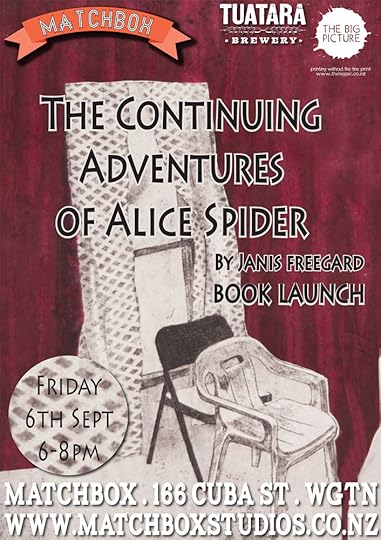
Janis Freegard and Matchbox Studios invite you to the launch of “The Continuing Adventures of Alice Spider”, a chapbook of prose poems published by Anomalous Press.
FRIDAY 6TH SEPTEMBER 6PM – 8PM
MATCHBOX STUDIOS
166 CUBA ST
WELLINGTON
Alice Spider is a spinner of words, dancing them around until some spill on to the page. She’s both your one true friend and a trollopy little tart. Alice the Webster is weaving herself a wild, wild life. This prose poem sequence includes drinking champagne in a hot air balloon, an exploration of surrealism and an unusual encounter with a burglar. Welcome to Alice’s labyrinthine web.
“Age cannot wither her, nor custom stale her infinite variety” – these words weren’t first written for Alice Spider, but they should have been. She is a heroine for our times – a multitasker of the human spirit and a joy in all her manifestations. Cherish her, and take her to your hearths.
-Mary Cresswell, author of Trace Fossils


August 18, 2013
Robin Hyde event, Whanganui
Peter Clayworth, Ann-Marie Houng Lee & Redmer Yska with Robin Hyde
It was great day in Whanganui on Saturday (17th August, the day after National Poetry Day). The Sarjeant (which supported the event) was closed for earthquake checks but Element cafe kindly stepped in – very cool venue in an old bank building. Dr Mary Paul and Redmer Yska gave us some fascinating insights into Robin Hyde/Iris Wilkinson’s life and writing (including Redmer’s reading of her poem ‘The White Chair’), I read a few of her poems and a few of my own, and the legendary Glen Colquhoun rounded out the afternoon with a lively performance of poems dedicated to Iris. Despite all the shakiness of the day before, there was an impressive turnout of around 80 lovely people, some of whom had travelled from Palmerston North and Wellington to be there.
The event was the brain-child of Whanganui-based writer Ann-Marie Houng Lee who did a fantastic job of organising the event. She told me it was sparked by the Tuesday poem I posted (If you have linen women) a couple of months back. Worth checking out if you haven’t read it before.
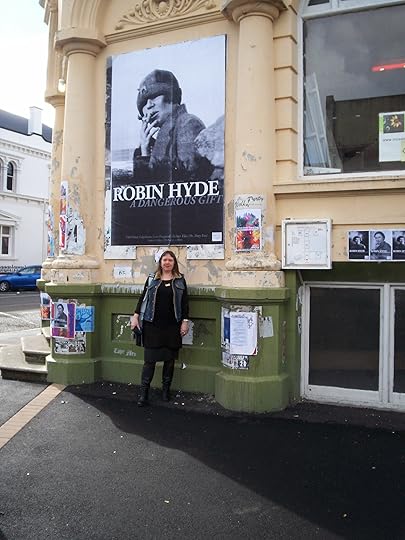 Me with Robin Hyde outside the old Chronicle building
Me with Robin Hyde outside the old Chronicle building


August 15, 2013
A Poem for National Poetry Day
Happy Poetry Day! Here’s a poem I wrote after Rhian Gallagher’s excellent reading at Massey University last July.
The Lift
(for Anna Jackson)
it had been one of those days
that was part of one of those weeks, those months
where people seemed angry
& I felt like the last runner in the relay race
taking the blame for not getting the baton
over the finish line fast enough
everyone scolding
I was worn down by it, diminished
& to top it off, the bus sailed past without seeing me
and I was late for the reading, another failure
so when Anna offered me a lift home
I could have cried
because it was the first nice thing
that had happened that day
so much bigger than a ride in a car
it was all about standing alone
in a big grey city
and somebody suddenly
handing you marigolds
There are poetry events all around the country for National Poetry Day and if you’re in Whanganui tomorrow, it would be great to see you at the Sarjeant.



